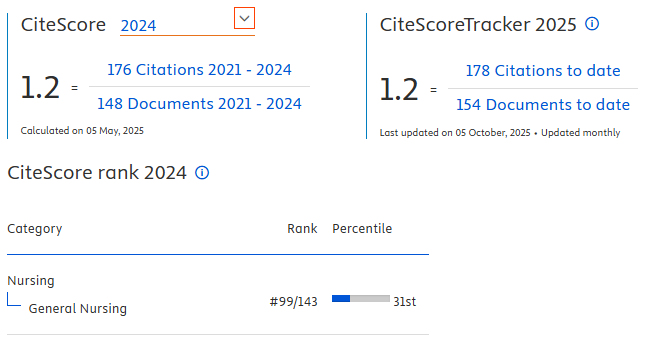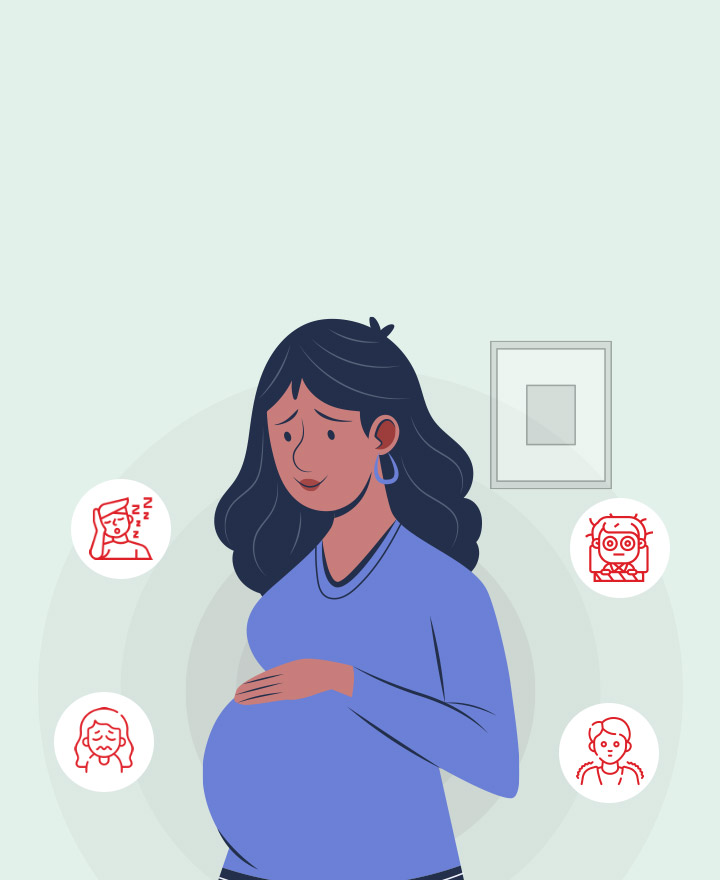The Effects from Physical Exercise on the Blood Glucose Levels, HbA1c and Quality of Life of Type 2 Diabetes Mellitus Patients: A Systematic Review
Downloads
Introduction: The present study aimed to analyze the effects of aerobic exercise, resistance and a combination of both on blood glucose levels, HbA1c and quality of life for patients with T2DM.
Methods: This systematic review used PRISMA (Preferred Reporting Items for Systematic Reviews and Meta-Analysis). Scopus, Science Direct and PubMed online databases were extensively searched, focusing on the last five years. The search utilized the phrases "diabetes," "physical exercise,” "glucose" and "quality of life." The inclusion criteria in the study regarding the literature was that it had to be an original article, that the source was a journal, that the article was in English and that it was available in full text.
Results: We identified 1017 articles where 17 were considered to be relevant for this systematic review. The combination of resistance and aerobic physical exercise seems to have a greater impact on glucose, HbA1c and quality of life. Aerobic exercise, resistance exercise and a combination of both have benefits when it comes to reducing blood glucose levels and HbA1c, as well as improving the quality of life of patients with T2DM.
Conclussion: The type and intensity of the exercise chosen for the management of T2DM must be adjusted to the clinical condition and the patient's individual physical fitness
Adamska, A., PrzegaliÅ„ski, M., Rutkowska, I., Nikolajuk, A., Karczewska-Kupczewska, M., Górska, M., & Stra̧czkowski, M. (2012). Relationship between regular aerobic physical exerciseand glucose andlipidoxidationinobesesubjects-apreliminary report. Polish Annals of Medicine, 19(2), 117–121. https://doi.org/10.1016/j.poamed.2012.05.001
American College of Sports Medicine, Pescatello, L. S., Arena, R., Riebe, D., & D., T. P. (2014). ACSM's Guidelines for Exercise Testing and Prescription. In Medicine & Science in Sports & Exercise (Ninth Edit, Vol. 34). https://doi.org/10.1097/00005768-200209000-00024
American Diabetes Association (ADA). (2016). Standards of Medical Care in Diabetes”2016 : Summary of Revisions. Diabetes Care, 39(Supplement 1), S4–S5. https://doi.org/10.2337/dc16-s003
AminiLari, Z., Fararouei, M., Amanat, S., Sinaei, E., Dianatinasab, S., AminiLari, M., ... Dianatinasab, M. (2017). The effect of 12 weeks aerobic, resistance, and combined exercises on omentin-1 levels and insulin resistance among type 2 diabetic middle-aged women. Diabetes and Metabolism Journal, 41(3), 205–212. https://doi.org/10.4093/dmj.2017.41.3.205
Balducci, Stefano, Sacchetti, Massimo, Haxhi, Jonida, Orlando, Giorgio, D'Errico, Valeria, Fallucca, Sara, Menini, Stefano, Pugliese, G. (2014). Physical Exercise as therapy for type II diabetes. Diabetes/Metabolism Research and Reviews, 32(30), 13–23. https://doi.org/10.1002/dmrr
Behrouz, S., Mazloom, S. R., Kooshiar, H., Aghebati, N., Asgharipour, N., & Vashani, H. R. B. (2017). Investigating the effect of humor therapy on chronic pain in the elderly living in nursing homes in mashhad, Iran. Evidence Based Care Journal, 7(2), 27–36. https://doi.org/10.22038/EBCJ.2017.24247.1529
Benkar, A. P., & Kanase, S. B. (2017). Effect of aerobic exercises and resistance training on glucose levels in type 2 diabetic subjects. Asian Journal of Pharmaceutical and Clinical Research, 10(7), 360–363. https://doi.org/10.22159/ajpcr.2017.v10i7.18532
Bril, V., & Perkins, B. A. (2013). Canadian Diabetes Association Clinical Practice Guidelines Expert Committee. Can J Diabetes, 37 (Suppl, S168-183. https://doi.org/10.1016/j.jcjd.2013.01.039
Burrows, M. (2002). Exercise, Nutrition, and the Older Woman; Wellness for Women Over Fifty. British Journal of Nutrition, 88(3), 333–334. https://doi.org/10.1079/bjn2002592
Carus, P. T., Ortega, A., H.P, K., Santos, V., G, H., Ramos, J., & Armando Raimundo. (2015). A randomized controlled trial on the effects of combined aerobic-resistance exercise on muscle strength and fatigue, glycemic control and health-related quality of life of type 2 diabetes patients. The Journal of Sports Medicine and Physical Fitness, (July).
Chawla, A., Chawla, R., & Jaggi, S. (2016). Microvasular and macrovascular complications in diabetes mellitus: Distinct or continuum? Indian Journal of Endocrinology and Metabolism, 20(4), 546–553. https://doi.org/10.4103/2230-8210.183480
Chiang, S. L., Heitkemper, M. M. L., Hung, Y. J., Tzeng, W. C., Lee, M. S., & Lin, C. H. (2019). Effects of a 12-week moderate-intensity exercise training on blood glucose response in patients with type 2 diabetes: A prospective longitudinal study. Medicine (United States), 98(36). https://doi.org/10.1097/MD.0000000000016860
Çolak, T. K., Acar, G., Elçin Dereli, E., Özgül, B., Demirbüken, Ä°., Alkaç, Ç., & Polat, M. G. (2016). Association between the physical activity level and the quality of life of patients with type 2 diabetes mellitus. Journal of Physical Therapy Science, 28(1), 142–147. https://doi.org/10.1589/jpts.28.142
Colberg, S. R. (2017). Key points from the updated guidelines on exercise and diabetes. Frontiers in Endocrinology, 8(FEB), 1–7. https://doi.org/10.3389/fendo.2017.00033
Colberg, S. R., Sigal, R. J., Yardley, J. E., Riddell, M. C., Dunstan, D. W., Dempsey, P. C., ... Tate, D. F. (2016). Physical activity/exercise and diabetes: A position statement of the American Diabetes Association. Diabetes Care, 39(11), 2065–2079. https://doi.org/10.2337/dc16-1728
Conners, R. T., Caputo, J. L., Coons, J. M., Fuller, D. K., & Morgan, D. W. (2019). Impact of underwater treadmill training on glycemic control, blood lipids, and health-related fitness in adults with type 2 diabetes. Clinical Diabetes, 37(1), 36–43. https://doi.org/10.2337/cd17-0066
Físico, T., Glicemia, N. A., Oxidativo, E. E., Diabetes, E. M., Revisí£o, T., Sistemática, S., & A, R. (2020). Physical Training On Glycemia And Oxidative Stress In Type 2 Diabetes : A Systematic Review. 26, 70–76.
Gilani, S. R. M., & Feizabad, A. K. (2019). The effects of aerobic exercise training on mental health and self-esteem of type 2 diabetes mellitus patients. Health Psychology Research, 7(65786), 10–14. https://doi.org/10.4081/hpr.2019.6576
Gillett, M., Royle, P., Snaith, A., Scotland, G., Poobalan, A., Imamura, M., ... Waugh, N. (2012). Non-pharmacological interventions to reduce the risk of diabetes in people with impaired glucose regulation: A systematic review and economic evaluation. Health Technology Assessment, 16(33), 1–235. https://doi.org/10.3310/hta16330
Gurudut, P., & Rajan, A. P. (2017). Immediate effect of passive static stretching versus resistance exercises on postprandial blood sugar levels in type 2 diabetes mellitus: A randomized clinical trial. Journal of Exercise Rehabilitation, 13(5), 581–587. https://doi.org/10.12965/jer.1735032.516
Halvatsiotis, P., Short, K. R., Bigelow, M., & Sreekumaran Nair, K. (2002). Synthesis rate of muscle proteins, muscle functions, and amino acid kinetics in type 2 diabetes. Diabetes, 51(8), 2395–2404. https://doi.org/10.2337/diabetes.51.8.2395
Hu, F. B. (2011). Globalization of diabetes: The role of diet, lifestyle, and genes. Diabetes Care, 34(6), 1249–1257. https://doi.org/10.2337/dc11-0442
Jhingan, A., & Jhingan, R. M. (2017). Effect of cycling on glycaemia, blood pressure, and weight in young individuals with type 2 diabetes. Journal of Clinical and Diagnostic Research, 11(7), OC09-OC11.
https://doi.org/10.7860/JCDR/2017/28111.10162
Kahn, S. E., Cooper, M. E., & Prato, S. Del. (2014). Pathophysiology and treatment of type 2 diabetes: perspectives on the past, present, and future. The Lancet, 383(9922), 136–137. https://doi.org/10.1016/S0140-6736(13)62154-6
Knapen, J., Vancampfort, D., Morií«n, Y., & Marchal, Y. (2015). Exercise therapy improves both mental and physical health in patients with major depression. Disability and Rehabilitation, 37(16), 1490–1495. https://doi.org/10.3109/09638288.2014.972579
Leinonen, R., Heikkinen, E., Hirvensalo, M., Lintunen, T., Rasinaho, M., Kallinen, M., & Koski, J. (2007). Customer-oriented counseling for physical activity in older people : study protocol and selected baseline results of a randomized- controlled trial ( ISRCTN 07330512 ). Scandinavian Journal of Medicine and Science in Sports, 156–164.
https://doi.org/10.1111/j.1600-0838.2006.00536.x
Lin, C. H., Ho, C. W., Chen, L. C., Chang, C. C., Wang, Y. W., Chiou, C. P., & Chiang, S. L. (2017). Effects of a 12-Week exercise training on insulin sensitivity, quality of life, and depression status in patients with type 2 diabetes. Journal of Medical Sciences (Taiwan), 37(6), 227–236.
https://doi.org/10.4103/jmedsci.jmedsci_68_17
Liu, Y., Liu, S.-X., Cai, Y., Xie, K.-L., Zhang, W.-L., & Zheng, F. (2015). Effects of combined aerobic and resistance training on the glycolipid metabolism and inflammation levels in type 2 diabetes mellitus.
Mancini, M. E., Diekema, D. S., Hoadley, T. A., Kadlec, K. D., Leveille, M. H., McGowan, J. E., ... Sinz, E. H. (2015). Part 3: Ethical issues: 2015 American Heart Association guidelines update for cardiopulmonary resuscitation and emergency cardiovascular care. In Circulation (Vol. 132). https://doi.org/10.1161/CIR.0000000000000254
McKay, H. G., King, D., Eakin, E. G., Seeley, J. R., & Glasgow, R. E. (2001). The Diabetes Network Internet-based physical activity intervention. Diabetes Care, 24, 1328–1334.
Mendes, R., Sousa, N., Almeida, A., Subtil, P., Guedes-Marques, F., Reis, V. M., & Themudo-Barata, J. L. (2016). Exercise prescription for patients with type 2 diabetes - A synthesis of international recommendations: Narrative review. British Journal of Sports Medicine, 50(22), 1379–1381. https://doi.org/10.1136/bjsports-2015-094895
Naci, H., & Ioannidis, J. P. A. (2015). Comparative effectiveness of exercise and drug interventions on mortality outcomes: Metaepidemiological study. British Journal of Sports Medicine, 49(21), 1414–1422. https://doi.org/10.1136/bjsports-2015-f5577rep
Najafipour, F., Mobasseri, M., Yavari, A., Nadrian, H., Aliasgarzadeh, A., Abbasi, N. M., ... Sadra, V. (2017). Effect of regular exercise training on changes in HbA1c, BMI and VO 2 max among patients with type 2 diabetes mellitus: An 8-year trial. BMJ Open Diabetes Research and Care, 5(1), 1–7. https://doi.org/10.1136/bmjdrc-2017-000414
Nygaard, H., Rí¸nnestad, B. R., Hammarström, D., Holmboe-Ottesen, G., & Hí¸stmark, A. T. (2017). Effects of exercise in the fasted and postprandial state on interstitial glucose in hyperglycemic individuals. Journal of Sports Science and Medicine, 16(2), 254–263.
Park, B. S., Khamoul, A. V, Brown, L. E., Kim, D. Y., Han, K. A., Min, K. W., & An, G. H. (2016). Effects of Elastic Band Resistance Training on Glucose Control,Body Composition, and Physical Function in Women With Short- Vs. Long-Duration Type-2 Diabetes. Journal of Strength and Conditioning Research, 30(6), 1688–1699.
https://doi.org/10.1519/JSC.0000000000001256
Pourtaghi, F., Moghadam, Z. E., Ramazani, M., Vashani, H. B., & Mohajer, S. (2017). Effect of resistance training using thera-band on muscular strength and quality of life among the elderly. Evidence Based Care Journal, 7(3), 7–16. https://doi.org/10.22038/EBCJ.2017.25876.1584
Rahbar, S., Naimi, S. S., Soltani, A. R., Rahimi, A., Akbarzadeh Baghban, A., Rashedi, V., & Tavakkoli, H. M. (2017). Improvement in biochemical parameters in patients with type 2 diabetes after twenty-four sessions of aerobic exercise: A randomized controlled trial. Iranian Red Crescent Medical Journal, 19(7). https://doi.org/10.5812/ircmj.13931
Rasekaba, T. M., Graco, M., Risteski, C., Jasper, A., Berlowitz, D. J., Hawthorne, G., & Hutchinson, A. (2012). Impact of a diabetes disease management program on diabetes control and patient quality of life. Population Health Management, 15(1), 12–19. https://doi.org/10.1089/pop.2011.0002
Russell, R. D., Hu, D., Greenaway, T., Blackwood, S. J., Dwyer, R. M., Sharman, J. E., ... Rattigan, S. (2017). Skeletal Muscle Microvascular- Linked Improvements in Glycemic Control From Resistance Training in Individuals With Type 2 Diabetes. 40(September), 1256–1263. https://doi.org/10.2337/dc16-2750
Rydén, L., Grant, P. J., Anker, S. D., Berne, C., Cosentino, F., Danchin, N., ... Xuereb, R. G. (2013). ESC guidelines on diabetes, pre-diabetes, and cardiovascular diseases developed in collaboration with the EASD. European Heart Journal, 34(39), 3035–3087. https://doi.org/10.1093/eurheartj/eht108
Sano, H., Peck, G. R., Kettenbach, A. N., Gerber, S. A., & Lienhard, G. E. (2011). Insulin-stimulated GLUT4 Protein Translocation in Adipocytes Requires the Rab10 Guanine Nucleotide Exchange Factor Dennd4C*. 286(19), 16541–16545. https://doi.org/10.1074/jbc.C111.228908
Shakil-ur-Rehman, S., Karimi, H., & Gillani, S. A. (2017). Effects of supervised structured aerobic exercise training program on fasting blood glucose level, plasma insulin level, glycemic control, and insulin resistance in type 2 diabetes mellitus. Pakistan Journal of Medical Sciences, 33(3), 576–580. https://doi.org/10.12669/pjms.333.12023
Thent, Z. C., Das, S., & Henry, L. J. (2013). Role of exercise in the management of diabetes mellitus: The global scenario. PLoS ONE, 8(11), 1–8. https://doi.org/10.1371/journal.pone.0080436
Van Der Heijden, M. M. P., Van Dooren, F. E. P., Pop, V. J. M., & Pouwer, F. (2013). Effects of exercise training on quality of life, symptoms of depression, symptoms of anxiety and emotional well-being in type 2 diabetes mellitus: A systematic review. Diabetologia, 56(6), 1210–1225.
https://doi.org/10.1007/s00125-013-2871-7
Wager, E., & Wiffen, P. J. (2011). Ethical issues in preparing and publishing systematic reviews. Chinese Journal of Evidence-Based Medicine, 11(7), 721–725. https://doi.org/10.1111/j.1756-5391.2011.01122.x
Zhang, X. C., & Kim, C. H. (2018). Experimental study on the effect of aerobic exercise on body fat reduction in patients with type 2 diabetes. Biomedical Research (India), 2018(Special Issue ArtificialIntelligentTechniquesforBioMedicalSignalProcessingEdition-II), S219–S221. https://doi.org/10.4066/biomedicalresearch.29-17-622
Authors who publish with Jurnal Ners agree to the following terms:
- Authors transfer the Copyright and grant Jurnal Ners the right of first publication with the work simultaneously licensed under a Creative Commons Attribution 4.0 International License that allows others to remix, adapt and build upon the work with an acknowledgment of the work's authorship and of the initial publication in Jurnal Ners.
- Authors are permitted to copy and redistribute the journal's published version of the work (e.g., post it to an institutional repository or publish it in a book), with an acknowledgment of its initial publication in Jurnal Ners.
Jurnal Ners requires a formal written declaration and transfer of copyright from the author(s) for each article published. We, therefore, ask you to complete and return this form, retaining a copy for your own records. Your cooperation is essential and appreciated. Any delay will result in a delay in publication. The form can be downloaded HERE.
































